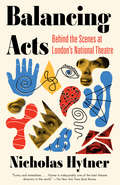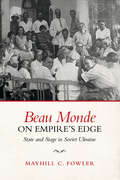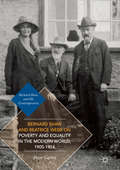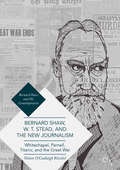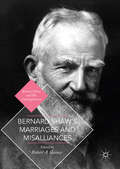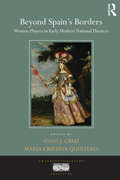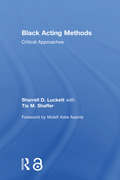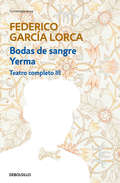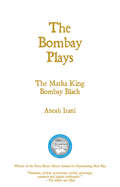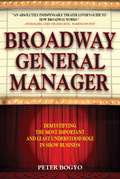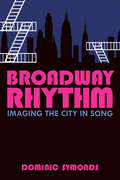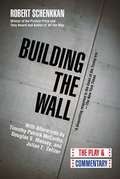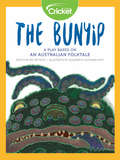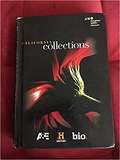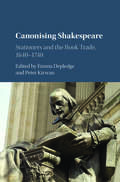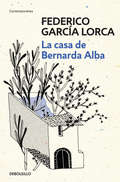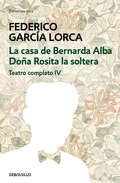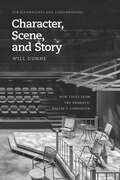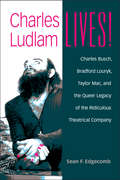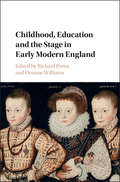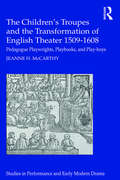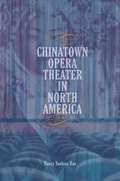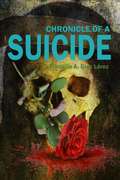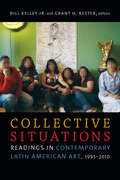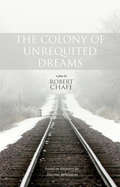- Table View
- List View
Balancing Acts: Behind the Scenes at London's National Theatre
by Nicholas HytnerFrom the Tony Award and Laurence Olivier Award-winning former director of London's National Theatre--this is a fascinating, candid, eloquent memoir about his career directing theater, producing films and opera, and working closely with some of the world's most celebrated actors. The list of Nicholas Hytner's accomplishments is long and distinguished: as Artistic Director of London's National Theatre from 2003-2015, he directed and produced a great number of their most popular and memorable plays and musicals, many of which have come to Broadway: Carousel, Richard Bean's One Man, Two Guvnors, David Hare's Stuff Happens among them. He directed both the London and Broadway productions of Miss Saigon, each of which ran for ten years. He directed Alan Bennett's The Madness of George III on both stage and screen. In short: He is one of today's most successful and admired theatrical impresarios. In Balancing Acts, Hytner gives us a detailed behind-the-scenes look at his creative process. From reviving classic musicals and mastering Shakespeare to commissioning new plays, he shows theater making to be a necessarily collaborative exercise, and he writes insightfully about the actors and playwrights he's worked with: Derek Jacobi, Richard Griffiths, Helen Mirren, Maggie Smith, Michael Gambon, Harold Pinter, and Tom Stoppard among them. With a cultural range that spans from The Mikado to The Lady in the Van, Balancing Acts is not only a memoir but a gathering of illuminating notes on the art of directing and a thoughtful meditation on the purpose of theater.
Beau Monde on Empire’s Edge: State and Stage in Soviet Ukraine
by Mayhill FowlerIn Beau Monde on Empire’s Edge, Mayhill C. Fowler tells the story of the rise and fall of a group of men who created culture both Soviet and Ukrainian. This collective biography showcases new aspects of the politics of cultural production in the Soviet Union by focusing on theater and on the multi-ethnic borderlands. Unlike their contemporaries in Moscow or Leningrad, these artists from the regions have been all but forgotten despite the quality of their art. Beau Monde restores the periphery to the center of Soviet culture. Sources in Russian, Ukrainian, Polish, and Yiddish highlight the important multi-ethnic context and the challenges inherent in constructing Ukrainian culture in a place of Ukrainians, Russians, Poles, and Jews. Beau Monde on Empire’s Edge traces the growing overlap between the arts and the state in the early Soviet years, and explains the intertwining of politics and culture in the region today.
Bernard Shaw and Beatrice Webb on Poverty and Equality in the Modern World, 1905–1914 (Bernard Shaw and His Contemporaries)
by Peter GahanThis book investigates how, alongside Beatrice Webb's ground-breaking pre- World War One anti-poverty campaigns, George Bernard Shaw helped launch the public debate about the relationship between equality and democracy in a developed economy. The ten years following his great 1905 play on poverty Major Barbara present a puzzle to Shaw scholars, who have hitherto failed to appreciate both the centrality of the idea of equality in major plays like Getting Married, Misalliance, and Pygmalion, and to understand that his major political work, 1928's The Intelligent Woman's Guide to Socialism and Capitalism had its roots in this period before the Great War. As both the era's leading dramatist and leader of the Fabian Society, Shaw proposed his radical postulate of equal incomes as a solution to those twin scourges of a modern industrial society: poverty and inequality. Set against the backdrop of Beatrice Webb's famous Minority Report of the Royal Commission on the Poor Law 1905-1909 - a publication which led to grass-roots campaigns against destitution and eventually the Welfare State - this book considers how Shaw worked with Fabian colleagues, Sidney and Beatrice Webb, and H. G. Wells to explore through a series of major lectures, prefaces and plays, the social, economic, political, and even religious implications of human equality as the basis for modern democracy.
Bernard Shaw, W. T. Stead, and the New Journalism
by Nelson O'Ceallaigh RitschelThis book explores Bernard Shaw’s journalism from the mid-1880s through the Great War—a period in which Shaw contributed some of the most powerful and socially relevant journalism the western world has experienced. In approaching Shaw’s journalism, the promoter and abuser of the New Journalism, W. T. Stead, is contrasted to Shaw, as Shaw countered the sensational news copy Stead and his disciples generated. To understand Shaw’s brand of New Journalism, his responses to the popular press’ portrayals of high profile historical crises are examined, while other examples prompting Shaw’s journalism over the period are cited for depth: the 1888 Whitechapel murders, the 1890-91 O’Shea divorce scandal that fell Charles Stewart Parnell, peace crusades within militarism, the catastrophic Titanic sinking, and the Great War. Through Shaw’s journalism that undermined the popular press’ shock efforts that prevented rational thought, Shaw endeavored to promote clear thinking through the immediacy of his critical journalism. Arguably, Shaw saved the free press.
Bernard Shaw's Marriages and Misalliances (Bernard Shaw and His Contemporaries)
by Robert A. GainesThis book combines the insights of thirteen Shavian scholars as they examine the themes of marriage, relationships and partnerships throughout all of Bernard Shaw's major works. It also connects Shaw's own experiences of love and marriage to the themes that emerge in his works, showing how his personal relationships in and out of matrimonial bonds change the ways his characters enter and exit marriages and misalliances. While providing a wealth of new analysis, this collection of essays also leaves lingering questions for the reader to spark continuing dialogue in both individual and academic settings.
Beyond Spain's Borders: Women Players in Early Modern National Theaters (Transculturalisms, 1400-1700)
by Anne J. Cruz María Cristina QuinteroThe prolific theatrical activity that abounded on the stages of early modern Europe demonstrates that drama was a genre that transcended national borders. The transnational character of early modern theater reflects the rich admixture of various dramatic traditions, such as Spain’s comedia and Italy’s commedia dell’arte, but also the transformations across cultures of Spanish novellas to French plays and English interludes. Of particular import to this study is the role that women and gender played in this cross-pollination of theatrical sources and practices. Contributors to the volume not only investigate the gendered effect of Spanish texts and literary types on English and French drama, they address the actual journeys of Spanish actresses to French theaters and of Italian actresses to the Spanish stage, while several emphasize the movement of royal women to various courts and their impact on theatrical activity in Spain and abroad. In their innovative focus on women’s participation and influence, the chapters in this volume illustrate the frequent yet little studied transnational and transcultural points of contact between Spanish theater and the national theaters of England, France, Austria, and Italy.
Black Acting Methods: Critical Approaches
by Sharrell Luckett Tia M. ShafferBlack Acting Methods seeks to offer alternatives to the Euro-American performance styles that many actors find themselves working with. A wealth of contributions from directors, scholars and actor trainers address afrocentric processes and aesthetics, and interviews with key figures in Black American theatre illuminate their methods. This ground-breaking collection is an essential resource for teachers, students, actors and directors seeking to reclaim, reaffirm or even redefine the role and contributions of Black culture in theatre arts.
Bodas de sangre | Yerma (Teatro completo #3)
by Federico García LorcaBodas de sangre | Yerma es el sexto volumen de la Biblioteca Federico García Lorca y el tercero de los que reúnen su «Teatro completo». En este volumen se ofrecen al lector clásicos lorquianos como Bodas de sangre y Yerma. Asimismo, se incluyen conferencias y charlas ofrecidas por el poeta en torno a sus textos, lo que permite una aproximación aún más personal a su obra. La edición y los prólogos, a cargo de Miguel García-Posada, permiten al lector acercarse a la complejidad de su obra y disfrutar, a lo largo de los siete volúmenes que componen esta Biblioteca Federico García Lorca, de uno de los autores españoles más relevantes del siglo XX. «Una de las finalidades que persigo con mi teatro es precisamente aspaventar y aterrar un poco. Estoy seguro y contento de escandalizar. Quiero provocar revulsivos, a ver si se vomita de una vez todo lo malo del teatro actual.»Federico García Lorca --------------------------------------------------------------------------BIBLIOTECA FEDERICO GARCÍA LORCA Poesía competa:1. Libro de poemas | Primeras canciones | Canciones2. Romancero gitano | Poema del cante jondo3. Poeta en Nueva York | Sonetos Teatro completo:4. La zapatera prodigiosa | Mariana Pineda5. El público | Así que pasen cinco años6. Bodas de sangre | Yerma7. La casa de Bernarda Alba | Doña Rosita la soltera--------------------------------------------------------------------------
The Bombay Plays
by Anosh IraniIn The Matka King—a story that pits human nature against love and chance—a landscape of betrayal and redemption comes to life in the red-light district of Bombay, India. One very powerful eunuch, Top Rani, operates an illicit lottery through his brothel, and when a gambler who is deeply in debt makes an unexpected wager, the stakes become life and death. Bombay Black—winner of the Dora Mavor Moore Award for Outstanding New Play—tells the story of Apsara, Bombay’s most infamous dancer, who lives with her iron-willed mother, Padma, in an apartment by the sea. Padma takes money from men so they can watch her daughter perform a mesmerizing dance. When a mysterious blind man named Kamal visits for a private dance, his secret link to their past threatens to change each of their lives forever. At turns lyrical and brutal, Bombay Black charts the seduction of Apsara by Kamal, and Padma’s violent enmity towards the blind man and the secret he holds.
Broadway General Manager: Demystifying the Most Important and Least Understood Role in Show Business
by Peter Bogyo“An absolutely indispensable theater lover’s guide to how Broadway works.” —Peter Marks, chief theater critic, Washington Post“Highly recommended for those considering theater as a career and for those who love theater and want to know more about what goes on before the curtain goes up and after.” —Library JournalBroadway General Manager is a fascinating, insightful, and entertaining glimpse into the normally closed world of theatrical general management. Penned by veteran Broadway insider Peter Bogyo, readers will gain an appreciation and understanding of what the business half of show business is all about. For the first time ever, gain backstage access to the fast-paced and glamorous world of Broadway. Broadway General Manager is an invaluable resource that examines actual production and operating budgets for a Broadway show and shares contracts for award-winning actors, directors, and designers, all of which are analyzed extensively. Also included are in-depth discussions on such topics as:How to get started as a general manager Negotiating contracts How the producing entity functions Programming the box office The issues related to hiring employees Binding insurance Financial overview Maintaining the run of a show What to do when sales start to slump Closing a show And much more Laced with humorous insights and personal anecdotes, Broadway General Manager will delight both the average theater lover as well as individuals with a serious interest in commercial arts management.
Broadway Rhythm: Imaging the City in Song
by Dominic SymondsBroadway Rhythm is a guide to Manhattan like nothing you've ever read. Author Dominic Symonds calls it a performance cartography, and argues that the city of New York maps its iconicity in the music of the Broadway songbook. A series of walking tours takes the reader through the landscape of Manhattan, clambering over rooftops, riding the subway, and flying over skyscrapers. Symonds argues that Broadway's songs can themselves be used as maps to better understand the city though identifiable patterns in the visual graphics of the score, the auditory experience of the music, and the embodied articulation of performance, recognizing in all of these patterns, corollaries inscribed in the terrain, geography, and architecture of the city. Through musicological analyses of works by Gershwin, Bernstein, Copland, Sondheim and others, the author proposes that performance cartography is a versatile methodology for urban theory, and establishes a methodological approach that uses the idea of the map in three ways: as an impetus, a metaphor, and a tool for exploring the city.
Building the Wall: The Play and Commentary (Oberon Modern Plays Ser.)
by Julian E. Zelizer Douglas S. Massey Robert Schenkkan Timothy Patrick McCarthyIn the tradition of Hamilton and Angels in America, a powerful, politically charged, dystopian drama that couldn’t be more timely. Written in a “white-hot fury” on the eve of the 2016 election, the stunning new play by Pulitzer Prize– and Tony Award–winning dramatist Robert Schenkkan is creating a nationwide sensation. Bypassing the usual development path for plays, it has been signed up to open in five theaters across America in a National New Play Network Rolling World Premiere, starting in Los Angeles (March) and Denver (April) and continuing in the Washington, DC, area, Tucson, and Miami, with more productions to follow, including in Santa Fe and New York City. Building the Wall lays out in a harrowing drama the consequences of Donald Trump’s anti-immigration campaign rhetoric turned into federal policy. Two years from now, that policy has resulted in the mass round-up of millions of illegal aliens, with their incarceration overflowing into private prisons and camps reminiscent of another century. The former warden for one facility is awaiting sentencing for what happened under his watch. In a riveting interview with a historian who has come seeking the truth, he gradually reveals how the unthinkable became the inevitable, and the faceless illegals under his charge became the face of tragedy. The play is accompanied by commentary from three prominent scholars: on the real purpose of the border wall, our dark nativist history of restricting immigration, and the tradition of political protest in art.
The Bunyip: A Play Based on an Australian Folktale
by Pat BetteleyIn search of food for their families, some men go hunting. When one man catches a strange creature, he ignores his fellow hunters who tell him to release the creature. The young creature's mother, eager to reclaim her baby, floods the land and turns the hunter and his people into black swans.
California Collections
by Houghton Mifflin HarcourtCalifornia Collections: A Grade 9 language arts textbook
Canonising Shakespeare: Stationers and the Book Trade, 1640–1740
by Peter Kirwan Emma DepledgeCanonising Shakespeare offers the first comprehensive reassessment of Shakespeare's afterlife as a print phenomenon, demonstrating the crucial role that the book trade played in his rise to cultural pre-eminence. 1640-1740 was the period in which Shakespeare's canon was determined, in which the poems resumed their place alongside the plays in print, and in which artisans and named editors crafted a new, contemporary Shakespeare for Restoration and eighteenth-century consumers. A team of international contributors highlight the impact of individual booksellers, printers, publishers and editors on the Shakespearean text, the books in which it was presented, and the ways in which it was promoted. From radical adaptations of the Sonnets to new characters in plays, and from elegant subscription volumes to cheap editions churned out by feuding publishers, this period was marked by eclecticism, contradiction and innovation as stationers looked to the past and the future to create a Shakespeare for their own times.
La casa de Bernarda Alba
by Federico García LorcaFruto capital del universo lorquiano, esta obra sin parangón recoge la historia de Bernarda Alba, enviudada por segunda vez a los sesenta años, y de sus hijas, obligadas a sumirse en un luto que desencadenará la tragedia. Considerada la obra más madura de Lorca, La casa de Bernarda Alba cierra la llamada trilogía de la tragedia -formada también por Bodas de sangre y Yerma-. Su carácter realista y la opresión en el pecho que se siente ante la represión de unas mujeres atrapadas en un frío infierno de luto, celos, silencio y sueños truncados se ha interpretado como un presagio de los oscuros tiempos que se avecinaban y en los que el propio Lorca se convertiría en una víctima prematura. No obstante, la presente edición contrapone este texto tan magnífico como terrible a Los sueños de mi prima Aurelia, una comedia inacabada inspirada en la infancia del poeta y dramaturgo, que nos demuestra que no habíaabandonado la ironía y el sentido del humor. Vicente Aleixandre dijo...«Su corazón no era ciertamente alegre. Era capaz de toda la alegría del Universo; pero su sima profunda, como la de todo gran poeta, no era la de la alegría. Quienes le vieron pasar por la vida como un ave llena de colorido, no le conocieron.»
La casa de Bernarda Alba | Doña Rosita la soltera (Teatro completo #4)
by Federico García LorcaLa casa de Bernarda Alba | Doña Rosita la soltera es el séptimo y último volumen de la Biblioteca Federico García Lorca y el cuarto de los que reúnen su «Teatro completo» . En este volumen se ofrecen al lector clásicos lorquianos como La casa de Bernarda Alba y Doña Rosita la soltera. Asimismo, se incluyen conferencias y charlas ofrecidas por el poeta en torno a sus textos, lo que permite una aproximación aún más personal a su obra. La edición y los prólogos, a cargo de Miguel García-Posada, permiten al lector acercarse a la complejidad de su obra y disfrutar, a lo largo de los siete volúmenes que componen esta Biblioteca Federico García Lorca, de uno de los autores españoles más relevantes del siglo XX. Luis Buñuel dijo...«De todos los seres vivos que he conocido, Federico era el primero. Ya se pusiera al piano para interpretar a Chopin, ya improvisarauna pantomima o una breve escena teatral, era irresistible. Era como una llama.» --------------------------------------------------------------------------BIBLIOTECA FEDERICO GARCÍA LORCA Poesía competa:1. Libro de poemas | Primeras canciones | Canciones2. Romancero gitano | Poema del cante jondo3. Poeta en Nueva York | Sonetos Teatro completo:4. La zapatera prodigiosa | Mariana Pineda5. El público | Así que pasen cinco años6. Bodas de sangre | Yerma7. La casa de Bernarda Alba | Doña Rosita la soltera--------------------------------------------------------------------------
Character, Scene, and Story: New Tools from the Dramatic Writer's Companion (Chicago Guides to Writing, Editing, and Publishing)
by Will DunneWill Dunne first brought the workshop experience down to the desk level with The Dramatic Writer’s Companion, offering practical exercises to help playwrights and screenwriters work through the problems that arise in developing their scripts. Now writers looking to further enhance their storytelling process can turn to Character, Scene, and Story. Featuring forty-two new workshop-tested exercises, this sequel to The Dramatic Writer’s Companion allows writers to dig deeper into their scripts by fleshing out images, exploring characters from an emotional perspective, tapping the power of color and sense memory to trigger ideas, and trying other visceral techniques. The guide also includes a troubleshooting section to help tackle problem scenes. Writers with scripts already in progress will find they can think deeper about their characters and stories. And those who are just beginning to write will find the guidance they need to discover their best starting point. The guide is filled with hundreds of examples, many of which have been developed as both plays and films. Character, Scene, and Story is fully aligned with the new edition of The Dramatic Writer’s Companion, with cross-references between related exercises so that writers have the option to explore a given topic in more depth. While both guides can stand alone, together they give writers more than one hundred tools to develop more vivid characters and craft stronger scripts.
Charles Ludlam Lives!: Charles Busch, Bradford Louryk, Taylor Mac, and the Queer Legacy of the Ridiculous Theatrical Company
by Sean EdgecombPlaywright, actor and director Charles Ludlam (1943–1987) helped to galvanize the Ridiculous style of theater in New York City starting in the 1960s. Decades after his death, his place in the chronicle of American theater has remained constant, but his influence has changed. Although his Ridiculous Theatrical Company shut its doors, the Ludlamesque Ridiculous has continued to thrive and remain a groundbreaking genre, maintaining its relevance and potency by metamorphosing along with changes in the LGBTQ community. Author Sean F. Edgecomb focuses on the neo-Ridiculous artists Charles Busch, Bradford Louryk, and Taylor Mac to trace the connections between Ludlam’s legacy and their performances, using alternative queer models such as kinetic kinship, lateral historiography, and a new approach to camp. Charles Ludlam Lives! demonstrates that the queer legacy of Ludlam is one of distinct transformation—one where artists can reject faithful interpretations in order to move in new interpretive directions.
Childhood, Education and the Stage in Early Modern England
by Richard Preiss Deanne WilliamsWhat did childhood mean in early modern England? To answer this question, this book examines two key contemporary institutions: the school and the stage. The rise of grammar schools and universities, and of the professional stage featuring boy actors, reflect the culture's massive investment in children. In this collection, an international group of well-respected scholars examines how the representation of children by major playwrights and poets reflected the period's educational and cultural values. This book contains chapters that range from Shakespeare and Ben Jonson to the contemporary plays of Tom Stoppard, and that explore childhood in relation to classical humanism, medicine, art, and psychology, revealing how early modern performance and educational practices produced attitudes to childhood that still resonate to this day.
The Children's Troupes and the Transformation of English Theater 1509-1608: Pedagogue, Playwrights, Playbooks, and Play-boys (Studies in Performance and Early Modern Drama)
by Jeanne McCarthyThe Children’s Troupes and the Transformation of English Theater 1509–1608 uncovers the role of the children’s companies in transforming perceptions of authorship and publishing, performance, playing spaces, patronage, actor training, and gender politics in the sixteenth century. Jeanne McCarthy challenges entrenched narratives about popular playing in an era of revolutionary changes, revealing the importance of the children’s company tradition’s connection with many early plays, as well as to the spread of literacy, classicism, and literate ideals of drama, plot, textual fidelity, characterization, and acting in a still largely oral popular culture. By addressing developments from the hyper-literate school tradition, and integrating discussion of the children’s troupes into the critical conversation around popular playing practices, McCarthy offers a nuanced account of the play-centered, literary performance tradition that came to define professional theater in this period. Highlighting the significant role of the children’s company tradition in sixteenth-century performance culture, this volume offers a bold new narrative of the emergence of the London theater.
Chinatown Opera Theater in North America
by Nancy Yunhwa RaoThe Chinatown opera house provided Chinese immigrants with an essential source of entertainment during the pre “World War II era. But its stories of loyalty, obligation, passion, and duty also attracted diverse patrons into Chinese American communities Drawing on a wealth of new Chinese- and English-language research, Nancy Yunhwa Rao tells the story of iconic theater companies and the networks and migrations that made Chinese opera a part of North American cultures. Rao unmasks a backstage world of performers, performance, and repertoire and sets readers in the spellbound audiences beyond the footlights. But she also braids a captivating and complex history from elements outside the opera house walls: the impact of government immigration policy; how a theater influenced a Chinatown's sense of cultural self; the dissemination of Chinese opera music via recording and print materials; and the role of Chinese American business in sustaining theatrical institutions. The result is a work that strips the veneer of exoticism from Chinese opera, placing it firmly within the bounds of American music and a profoundly American experience.
Chronicle of a Suicide
by Franklin A. Díaz Lárez Julia Perez CasconA narrative of a suicide, and all the fundamental causes and circumstances that surrounded it. It is a chronicle narrated in the first person by its author, about the culmination of the circumstances that pushed a young real estate agent to commit the greatest barbarity that any human can commit against themselves; suicide. It is a detailed explanation of the events that drove him to madness, that drove him to the abyss of obsession. The story starts with a change of office address, to a location in which our protagonist meets the cause of his delirium; a beautiful young lady who had just turned sixteen. The very day they met, both were automatically charmed by one another, and influenced by loving emotions. However, as time passed, their family bonds (they are cousins), the girl’s toxic influence, and her immaturity drive things towards a fatality.
Collective Situations: Readings in Contemporary Latin American Art, 19952010
by Bill Kelley Jr. Jr. Grant H. KesterIn Collective Situations scholars, artists, and art collectives present a range of socially engaged art practices that emerged in Latin America during the Pink Tide period, between 1995 and 2010. This volume's essays, interviews, and artist's statements—many of which are appearing in English for the first time—demonstrate the complex relationship between moments of political transformation and artistic production. Whether addressing human rights in Colombia, the politics of urban spaces in Brazil, the violent legacy of military dictatorships in the region, or art’s intersection with public policy, health, and the environment, the contributors outline the region’s long-standing tradition of challenging ideas about art and the social sphere through experimentation. Introducing English-language readers to some of the most dynamic and innovative contemporary art in Latin America, Collective Situations documents new possibilities for artistic practice, collaboration, and creativity in ways that have the capacity to foster vibrant forms of democratic citizenship. Contributors Gavin Adams, Mariola V. Alvarez, Gustavo Buntinx, María Fernanda Cartagena, David Gutiérrez Castañeda, Fabian Cereijido, Paloma Checa-Gismero, Kency Cornejo, Raquel de Anda, Bill Kelley Jr., Grant H. Kester, Suzanne Lacy, Ana Longoni, Rodrigo Martí, Elize Mazadiego, Annie Mendoza, Alberto Muenala, Prerana Reddy, Maria Reyes Franco, Pilar Riaño-Alcalá, Juan Carlos Rodríguez
The Colony of Unrequited Dreams
by Robert ChafeSpanning two decades, Smallwood’s story is anchored and propelled by one of Johnston’s most memorable creations: the fictitious Sheilagh Fielding, a caustic newspaper columnist whose own battles with the past and alcohol addiction find full vent and expression in her tireless dogging of Smallwood’s climb to power. At its heart, The Colony of Unrequited Dreams is the story of a man whose career is buoyed and sometimes sunk by his unresolved feelings for a woman he never allowed himself to love. It is also the story of Newfoundland’s final years as a country, the end of one cultural and political trajectory, and the beginning of another.
